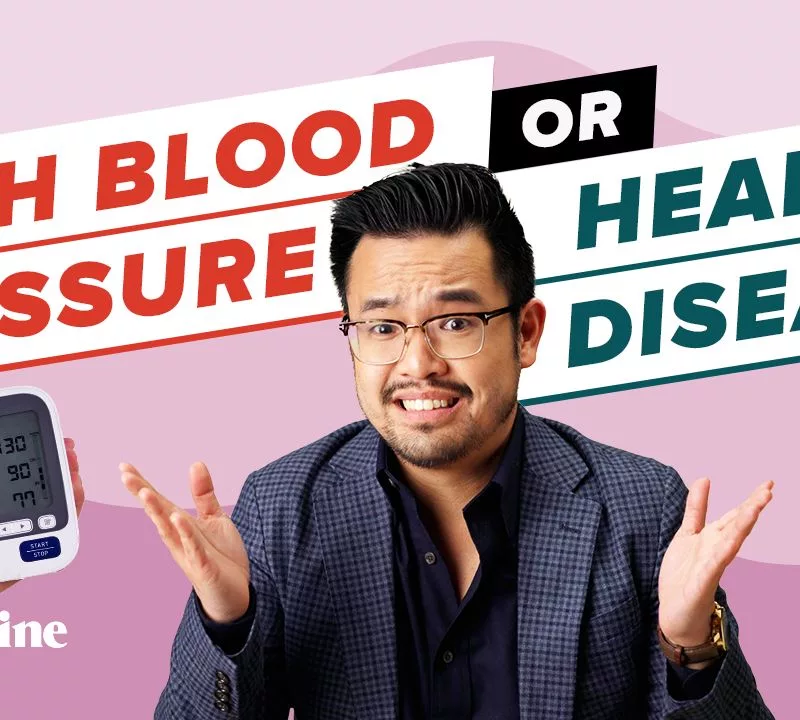Most people assume that high blood pressure and heart disease are just two names for the same problem. That’s a safe bet for confusion, but the truth is a little more nuanced. Hypertension is the steady pressure that pushes blood through your arteries, while heart disease is the damage that pressure (and other factors) can cause to the heart itself. Getting these two straight can be the difference between catching a problem early and waiting until it’s too late.
In this chat‑style guide we’ll walk through what each condition really means, how they’re connected, how doctors spot them, and what you can do right now to keep both under control. Grab a cup of coffee, settle in, and let’s untangle the difference hypertension heart disease brings to our lives.
What Is Hypertension?
Definition and Numbers
Hypertension, often called high blood pressure, is when the force of blood against the walls of your arteries stays elevated over time. The current guideline marks a reading of 130 mmHg systolic or 80 mmHg diastolic (130/80) as the threshold for stage 1 hypertension. Anything consistently above 140/90 mmHg is considered stage 2.
Hypertension Symptoms
Here’s the catch: most folks with hypertension feel perfectly fine. That’s why it’s nicknamed “the silent killer.” When symptoms do appear, they’re usually vague—headaches, dizziness, occasional chest tightness, or blurry vision. Because they’re not specific, it’s easy to dismiss them until something more serious surfaces.
Why It Matters
Even if you don’t notice any signs, untreated hypertension silently nudges your arteries, making them stiffer and more prone to plaque. Over years, that extra pressure is a major driver of heart disease, stroke, kidney damage, and even vision loss.
What Is Heart Disease?
Broad Definition
Heart disease isn’t a single illness; it’s a family of conditions that affect the heart’s structure or function. The most common members are coronary artery disease (CAD), heart failure, left‑ventricular hypertrophy, and arrhythmias. In everyday talk, “heart disease” often refers to any disorder that impairs the heart’s ability to pump blood efficiently.
Common Types
- Coronary artery disease – narrowed or blocked arteries that feed the heart muscle.
- Hypertensive heart disease – thickening of the heart muscle caused by long‑standing high blood pressure.
- Heart failure – the heart can’t pump enough blood to meet the body’s needs.
- Arrhythmias – irregular heartbeats that can be too fast, too slow, or chaotic.
Symptoms to Watch
Chest pain or pressure, shortness of breath, unexplained fatigue, swelling in the ankles, and palpitations can all signal heart disease. Unlike hypertension, these signals are more likely to force a doctor’s attention.
Quick Comparison
| Feature | Hypertension | Heart Disease |
|---|---|---|
| What it is | Elevated blood‑pressure numbers | Structural/functional problems of the heart |
| Primary organ affected | Arteries (systemic) | Heart muscle & coronary vessels |
| Typical symptoms | Often none; occasional headache or dizziness | Chest pain, shortness of breath, fatigue, swelling |
| Main risk factors | Salt, obesity, genetics, inactivity | High cholesterol, smoking, diabetes, hypertension |
| Long‑term consequence | Increases risk of heart disease & stroke | Can lead to heart failure, arrhythmia, death |
How Hypertension Leads to Heart Disease
Pathophysiology in Plain English
Imagine your arteries as garden hoses. When the water pressure (blood pressure) is constantly high, the hose walls get stretched and eventually develop weak spots. Those weak spots let plaque (fatty deposits) settle in, narrowing the passageway. The heart, meanwhile, has to work harder to push blood through those stiff hoses, so the muscle wall thickens—a condition called left‑ventricular hypertrophy.
The “Mountain‑and‑Horse” Analogy
As OSF HealthCare explains, “Think of blood pressure as the mountain and the heart as the horse. The higher the mountain, the harder the horse has to work.” Over time, that horse gets tired, its muscles thicken, and eventually it can’t keep up.
Statistical Link
A 2020 study published in the American Heart Association journal found that roughly one‑third of stroke patients had prior coronary artery disease, and hypertension was the common thread connecting them. In other words, high blood pressure isn’t just a sidekick; it’s often the main villain behind both stroke and heart disease.
Real‑World Example
Take John, a 58‑year‑old accountant who never thought much about his blood pressure. He felt fine for years, but a routine check revealed a reading of 148/92 mmHg. A few months later, he experienced chest tightness during a weekend hike and was diagnosed with hypertensive heart disease—a thickened heart muscle that was already straining to pump blood. Early detection of his hypertension could have prevented that heart change.
Diagnosis and Monitoring
Measuring Hypertension
The gold standard is a properly calibrated cuff taken at least twice in a quiet setting. Many doctors also recommend 24‑hour ambulatory blood‑pressure monitoring, which captures fluctuations throughout the day and night for a more accurate picture.
When to See a Doctor
If you notice persistent headaches, blurry vision, chest discomfort, or if home readings consistently exceed 130/80 mmHg, schedule an appointment. Even a single high reading can be a wake‑up call, especially if you have other risk factors like diabetes or a family history of heart disease.
Detecting Heart Disease
Doctors use a toolbox that includes:
- Electrocardiogram (ECG) – checks electrical activity.
- Echocardiogram – visualizes heart muscle thickness and motion.
- Stress tests – see how the heart handles exertion.
- Blood work – cholesterol, triglycerides, and cardiac enzymes.
Overlap vs. Distinct Tests
Some assessments serve both conditions. For example, an ECG can spot left‑ventricular hypertrophy caused by hypertension, while a cholesterol panel is essential for evaluating heart disease risk even if your blood pressure is normal.
Prevention and Management
Lifestyle Hacks That Hit Both
Good news: many actions lower blood pressure and protect the heart at the same time.
- DASH diet – rich in fruits, vegetables, whole grains, and low‑fat dairy; low in sodium and added sugars.
- Move daily – at least 150 minutes of moderate aerobic activity each week.
- Weight control – shedding excess pounds drops systolic pressure by about 1 mmHg per kilogram lost.
- No smoking – eliminates a major accelerant of artery damage.
- Limit alcohol – no more than two drinks a day for men, one for women.
Medication Overview
When lifestyle tweaks aren’t enough, medicines step in.
- ACE inhibitors & ARBs – relax blood vessels; also reduce heart‑muscle thickening.
- Thiazide diuretics – help kidneys shed excess salt and fluid.
- Beta‑blockers – lower heart rate and pressure; useful for both hypertension and certain heart‑disease patients.
- Statins – lower LDL cholesterol; crucial for coronary artery disease even if blood pressure is under control.
- Antiplatelet agents – prevent clots in people with known CAD.
When Hypertension Becomes Hypertensive Heart Disease
If blood‑pressure numbers stay high for years, the heart muscle may thicken (left‑ventricular hypertrophy). An echocardiogram will show a thickened wall, and a cardiologist may recommend tighter BP targets (often <120/80 mmHg) plus medications that specifically protect the heart muscle.
Everyday Monitoring Tools
Modern tech makes tracking easier than ever. Connected blood‑pressure cuffs sync with smartphones, and wearable devices can flag irregular heart rhythms. If a device alerts you to an unusual spike, it’s worth double‑checking with a medical professional.
Expert Insight
“Controlling blood pressure early is the single most effective strategy to prevent heart‑muscle damage,” says Dr. Kavitha Kalvakuri, a cardiologist at OSF HealthCare. “Even modest reductions can shave years off a patient’s risk timeline.”
Quick Risk Checklist
- Do you have a family history of hypertension or heart disease?
- Are you overweight or have a sedentary lifestyle?
- Do you consume a high‑salt diet?
- Do you smoke or drink heavily?
- Are you over 45 (men) or 55 (women) without regular check‑ups?
If you answered “yes” to any of the above, consider scheduling a blood‑pressure screening within the next month.
Expert Resources & Further Reading
For the most up‑to‑date recommendations, the American Heart Association and American College of Cardiology release joint guidelines each few years. Peer‑reviewed articles such as “Hypertensive heart disease: risk factors, complications and mechanisms” (Frontiers in Cardiovascular Medicine, 2023) dive deep into the science behind the condition.
Reliable patient‑focused sites like the CDC’s high‑blood‑pressure page and the Mayo Clinic’s heart‑disease overview are great places to verify information and find printable checklists.
Wrapping It Up
Understanding the difference hypertension heart disease presents is more than an academic exercise; it’s a practical roadmap for protecting your health. Hypertension is the pressure that can silently erode your arteries, while heart disease is the damage that may follow if you let that pressure run unchecked. By recognizing the signs, getting the right tests, and adopting lifestyle habits that attack both conditions, you take control of your cardiovascular future.
So, what’s your next step? Check your blood pressure at home, talk to your doctor about a heart‑health screening, or start swapping that extra pinch of salt for a fresh herb. You’ve got the knowledge—now put it into action. If you have questions or want to share your own story, drop a comment below. We’re all in this together, and every little change counts toward a stronger, healthier heart.


















Leave a Reply
You must be logged in to post a comment.